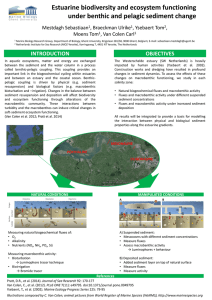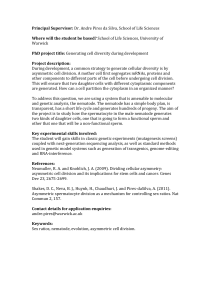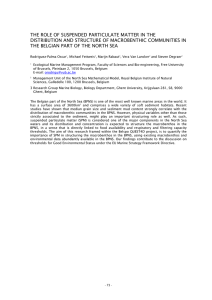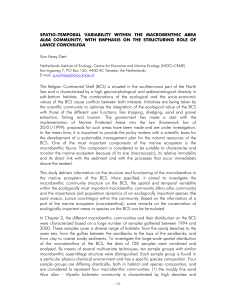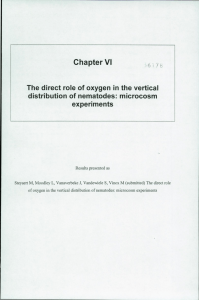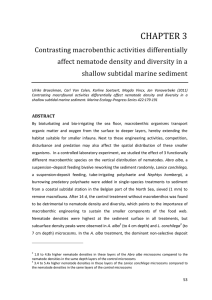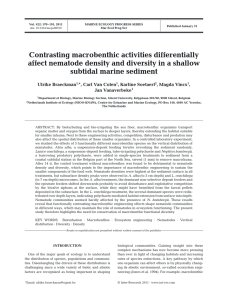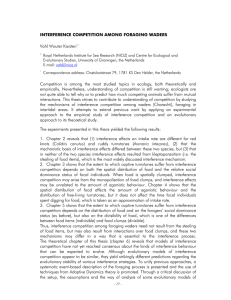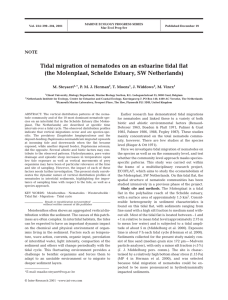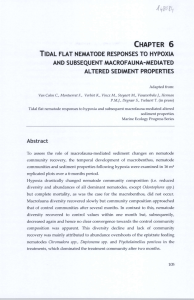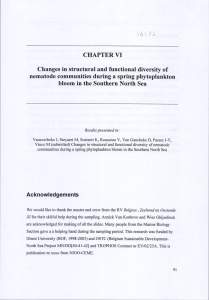Braeckman Ulrike, Jens Frickel, Magda Vincx and Jan Vanaverbeke
advertisement
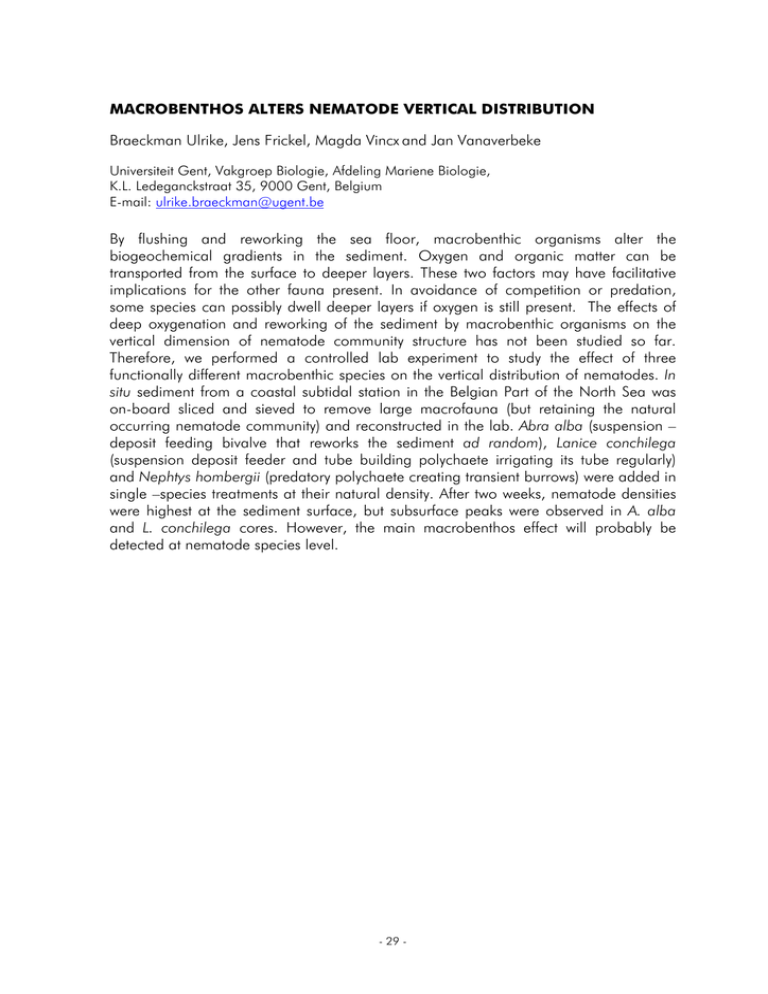
MACROBENTHOS ALTERS NEMATODE VERTICAL DISTRIBUTION Braeckman Ulrike, Jens Frickel, Magda Vincx and Jan Vanaverbeke Universiteit Gent, Vakgroep Biologie, Afdeling Mariene Biologie, K.L. Ledeganckstraat 35, 9000 Gent, Belgium E-mail: ulrike.braeckman@ugent.be By flushing and reworking the sea floor, macrobenthic organisms alter the biogeochemical gradients in the sediment. Oxygen and organic matter can be transported from the surface to deeper layers. These two factors may have facilitative implications for the other fauna present. In avoidance of competition or predation, some species can possibly dwell deeper layers if oxygen is still present. The effects of deep oxygenation and reworking of the sediment by macrobenthic organisms on the vertical dimension of nematode community structure has not been studied so far. Therefore, we performed a controlled lab experiment to study the effect of three functionally different macrobenthic species on the vertical distribution of nematodes. In situ sediment from a coastal subtidal station in the Belgian Part of the North Sea was on-board sliced and sieved to remove large macrofauna (but retaining the natural occurring nematode community) and reconstructed in the lab. Abra alba (suspension – deposit feeding bivalve that reworks the sediment ad random), Lanice conchilega (suspension deposit feeder and tube building polychaete irrigating its tube regularly) and Nephtys hombergii (predatory polychaete creating transient burrows) were added in single –species treatments at their natural density. After two weeks, nematode densities were highest at the sediment surface, but subsurface peaks were observed in A. alba and L. conchilega cores. However, the main macrobenthos effect will probably be detected at nematode species level. - 29 -
